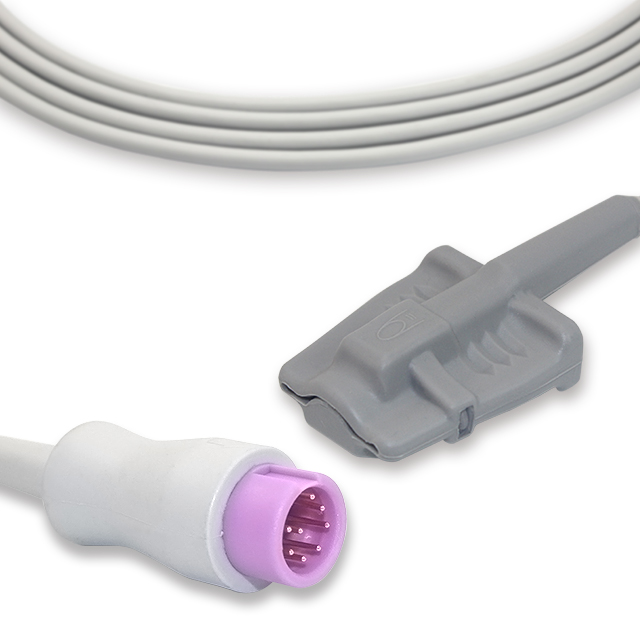The working principle of spo2 sensor
The traditional SpO2 measurement method is collect blood from the body, and using blood gas analyzer for electrochemical analysis to measure the partial pressure of blood oxygen PO2 to calculate the blood oxygen saturation. However, it is more troublesome and cannot be continuously monitored. Therefore, the oximeter came into being.
The oximeter is mainly composed of a microprocessor, memory (EPROM and RAM), two digital-to-analog converters that control LEDs a device .filters and amplifies the signal received by the photodiode, and digitizes the received signal to provide microprocessor’s analog-to-digital converter is composed.
The oximeter adopts a finger sleeve photoelectric sensor. You only need to put the sensor on the finger when measuring.using the finger as a transparent container for hemoglobin, and use red light with a wavelength of 660 nm and near-infrared light with a wavelength of 940 nm as the radiation. Enter the light source and measure the intensity of light transmission through the tissue bed to calculate the hemoglobin concentration and blood oxygen saturation.

Applicable people of oximeter
1.People with vascular diseases (coronary heart disease, hypertension, hyperlipidemia, cerebral thrombosis, etc.)
There are lipid deposits in the vascular lumen, and the blood is not smooth, which will cause difficulty in oxygen supply.The oximeter can easily check the blood oxygen of the human body.
2.Cardiovascular patients
Viscous blood, coupled with hardening of the coronary arteries, narrows the vascular lumen, resulting in poor blood supply and difficult oxygen supply. The body is “hypoxia” every day. Long-term mild hypoxia, the heart, brain and other organs with high oxygen consumption will gradually decline. Therefore, the long-term use of pulse oximeter to measure the blood oxygen content of cardiovascular and cerebrovascular patients can effectively prevent the occurrence of danger. If hypoxia occurs, the decision to supplement oxygen is made immediately, which can effectively reduce the chance of disease attack.
3.People with respiratory diseases (asthma, bronchitis, chronic bronchitis, pulmonary heart disease, etc.)
Blood oxygen testing for respiratory patients is indeed very important. On the one hand, breathing difficulties can lead to insufficient oxygen uptake. On the other hand, the persistence of asthma can also block the small organs, making gas exchange difficult and leading to hypoxia. Causes different degrees of damage to the heart, lungs, brain and even kidneys. Therefore, the use of pulse oximeter to detect blood oxygen content can reduce the incidence of respiratory tract.
4.Seniors over 60
The human body relies on blood to transmit oxygen. If there is less blood, there will naturally be less oxygen. With less oxygen, the physical condition naturally declines. Therefore, the elderly should use pulse oximetry to test the blood oxygen content every day. Once the blood oxygen is below the warning level, oxygen should be supplemented as soon as possible.
5.Sports and fitness crowd
Long-term mental work and strenuous exercise are prone to hypoxia, which affects myocardial and brain health. Such as sports enthusiasts; mental workers; plateau travel enthusiasts.
6.People who work more than 12 hours one day
The oxygen consumption of the brain accounts for 20% of the whole body oxygen uptake, and the brain’s oxygen consumption will inevitably increase with the transition of mental work. The human body can take in limited oxygen, consumes more, and consumes less. In addition to causing dizziness, fatigue, poor memory, slow response and other problems, it can also cause serious damage to the brain and myocardium, and even death from overwork. Therefore, people who study or work 12 hours a day must use pulse oximetry to test blood oxygen every day Content, monitor blood oxygen health from time to time, to ensure heart and brain health.
https://www.medke.com/products/patient-monitor-accessories/reusable-spo2-sensor/
Post time: Nov-05-2020

